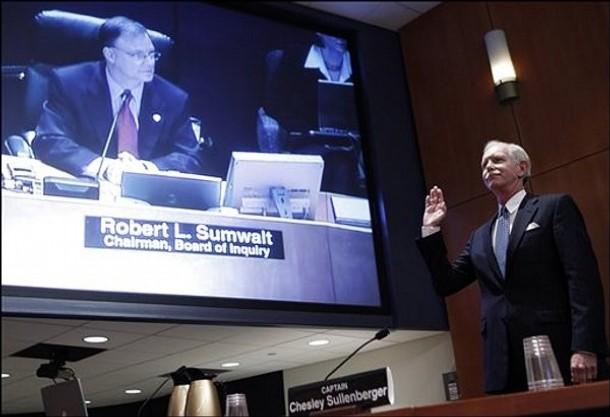
This is Robert L. Sumwalt's latest Impact column for BCA.
The day after NBAA-BACE concluded, Lee Ann Shay and Matthew Orloff, BCA’s editor and associate editor, respectively, and I were having a leisurely lunch on the Daytona Beach campus of Embry-Riddle Aeronautical University. It was nice for us to unwind after a very busy week at another successful BACE. Somehow Clint Eastwood’s movie Sully came up in the conversation. Matthew made a comment about how poorly NTSB had treated Sully. I gulped. Perhaps he had momentarily forgotten that I had been chairman of NTSB.
As you may recall, Tom Hanks played Captain Sullenberger’s character in the 2016 movie. The film is said to have grossed more than $250 million. The efforts that producers went through to ensure details were accurate were remarkable, down to the point of making sure the pilots’ IDs resembled those worn by Captain Sullenberger and First Officer Skiles on US Airways flight 1549 on Jan. 15, 2009. Hanks wore a replica of Sully’s Air Force Academy class ring. The movie producers even obtained two worn-out US Airways Airbus A320s out of the desert. One of them was dunked in a lake at Universal Studios to recreate the appearance of splashing down in the Hudson River. The cockpit of the other plane was placed on a gimbaled platform to film the flight deck scenes with Hanks and his Hollywood first officer. The mock NTSB board room was nearly identical in appearance to the real one.
That realism ended abruptly, however, at the point in the movie where NTSB interacted with Sully. And, how do I know? Because I was chairman of the NTSB’s board of inquiry for that accident. Let me tell you how it really played out.
An investigative hearing, such as that depicted in the movie, is where sworn testimony is elicited from hearing witnesses. NTSB designates “hearing parties” to governmental agencies, companies, and associations whose participation in the hearing can assist with gathering relevant information. Parties to this hearing were FAA, Airbus, CFM International, US Airways, US Airline Pilots Association and Association of Flight Attendants. Each party is offered the opportunity to ask questions. This structure enables questions from each organization because each has its own viewpoints and clarifications it wishes to highlight.
This hearing lasted three days, with testimony on topics such as bird detection and mitigation; aircraft certification standards regarding ditchings and forced landings on water; cabin safety; and certification standards for bird ingestion in engines. Like all NTSB hearings, this one was open to the public and also was webcast. The full transcript is available on the NTSB’s website, and an archived video of the entire hearing is available on YouTube.
I stated in my opening statement: “In preparation for this hearing, I flew through the accident scenario in a flight simulator. I've listened to the cockpit voice recorder (CVR) in real time and as an experienced pilot, I can tell you this flight crew had a lot going on. They had a lot going on in a very short period of time. And, in considering what could have been done differently, there is certainly no intention by the Safety Board to diminish the crew’s and the first responder’s extraordinary success in saving the lives of all passengers and crew that day.”
Captain Sullenberger was the first to testify. Because of his stardom status, we allowed Sully to enter and exit the hearing room through a hidden back door that was accessible only through a series of meandering corridors in the building’s basement. That allowed him to circumvent the swarm of spectators. The only other time I saw someone enter the board room that way was three years earlier, when then-Vice President Dick Cheney came to swear in a new NTSB chairman. Unlike in the movie, First Office Skiles did not testify, nor was he present.
One might imagine that as a key witness, Sully would be questioned for hours, perhaps even days. The reality is that he was questioned for a total of 38 minutes. His testimony was factual and professional. There were no “drop the mic” moments.
The movie depicts a hard charging panel of NTSB investigators interrogating Sully in a prosecutorial manner. In fact, it was anything but that. In truth, we were a bit worried about how the media might pick up on something that could have been interpreted as unfavorable about Sully’s performance.
The hearing document is made public when the chairman gavels open the meeting at 9 am on the first day of the hearing. The docket contains all the NTSB’s investigative material to date, including the transcript of the CVR, crew interviews and test results performed to date by NTSB. One of these documents was benignly titled, “Operations/Human Performance [Exhibit] 2DD--Attachment 28: Simulator Results.” This 36-page document discussed simulator test flights that NTSB investigators and party members performed at Airbus headquarters in Toulouse. These tests were conducted seven weeks earlier--not live and broadcast into the hearing room in real time as depicted in the film.
One of the objectives of these simulator runs was to “identify and evaluate the various options available to the flight crew of US Airways Flight 1549 following the bird strike (e.g., land at an airport or land on the Hudson River) and to determine the implications of each of those options.” In other words, did this crew do the right thing by landing in the Hudson instead of dead-sticking at LaGuardia? Important to note that participating in these tests wasn’t just NTSB. Also assisting were representatives from US Airways, the pilots’ union, Airbus and NTSB’s French counterpart, the BEA.
The results were a mixed bag: Of 15 simulator runs that replicated the bird strike situation faced by Sully and Skiles, the sim study showed that the simulator pilots were able to successfully land at LaGuardia or Teterboro on eight of those runs. Once a 35-second allowance for a startle effect was added to the simulations, none of the simulator pilots were able make it to an airport. By the way, the movie depicted Sully making the suggestion to account for this startle effect. No--that decision was made by NTSB Ph.D. human factors experts.
We feared that the results of these tests could be damming for Sully--perhaps the media would key-in on these tests and draw the conclusion that Sully, too, could have made it back to LaGuardia and that the landing in the Hudson was the wrong decision. It wasn’t that we were trying to protect Sully--it’s just that we feared it would appear like NTSB was trying to put a stain on this hero. Despite our fear of such, it wasn’t NTSB that made NTSB look like villains--it was Clint Eastwood’s movie that did.
Although we feared some in the media would question his decision, Sully’s testimony on this point was solid. “Looking at where we were and how much time, altitude and distance would be required to turn back toward LaGuardia and then fly toward LaGuardia, I determined quickly that that was going to be problematic, and it would not be a realistic choice, and I couldn't afford to be wrong. Once I had turned toward LaGuardia, it would have been an irrevocable choice, eliminating all other options. I had to make sure I could make it before I chose that option. I decided I couldn't.”
His testimony wasn’t an interrogation like portrayed in the movie. We ensured that we treated Sully fairly and with dignity and professionalism. We can only expect a witness to testify on areas in which they have expertise. If a question is out-of-line with those expectations, it was my responsibility as chairman of the board of inquiry to intervene. I did so when one party spokesperson questioned Sully how long he thought passengers could have survived in the cold waters that day if they had not been picked up by rescue boats. At that point, I turned to Sully and asked if he was an expert in water survivability. He replied that he wasn’t, so we moved past that question.
Having no more questions from the investigative staff, the party members or the board of inquiry, I told Sully: “I want to thank you very much for your testimony, for being here this morning, and for representing the piloting profession as you do. You are excused from the witness stand. Thank you very much.”
And with that, Sully left the same way he entered--through the secrecy of the underground passages from which he entered.
Eleven months later, when NTSB board members and investigative staff gathered in that same room to complete the investigation by deliberating the crash and adopting the final report, one of the findings of the investigation stated: “The professionalism of the flight crewmembers and their excellent crew resource management during the accident sequence contributed to their ability to maintain control of the airplane, configure it to the extent possible under the circumstances, and fly an approach that increased the survivability of the impact.”
Every story needs a protagonist, and every story needs an antagonist. NTSB drew the short straw on this one. Google “NTSB hearing us airways 1549” or something similar. See for yourself that NTSB never sullied Sully.




Comments
Sully was, as you tell first-hand, treated professionally, courteously and without the acrimony portrayed in the movie. Good on the NTSB for helping us learn from an accident where, thankfully, no lives were lost!
Maybe he did and the movie producers rejected his concerns about the NTSB portrayal.
The old adage "Never let the facts interfere with a good story" probably plays a significant part here.
The way Mr. Sumwalt described the real proceedings would have made for a very boring movie following the ditching. That simply is not allowed in Hollywood.
If he had tried and not made it to either of those airports the result would have been disastrous
He chose the most conservative option by ditching in the Hudson and the result speaks for itself, every passenger and crew member survived with no serious injuries